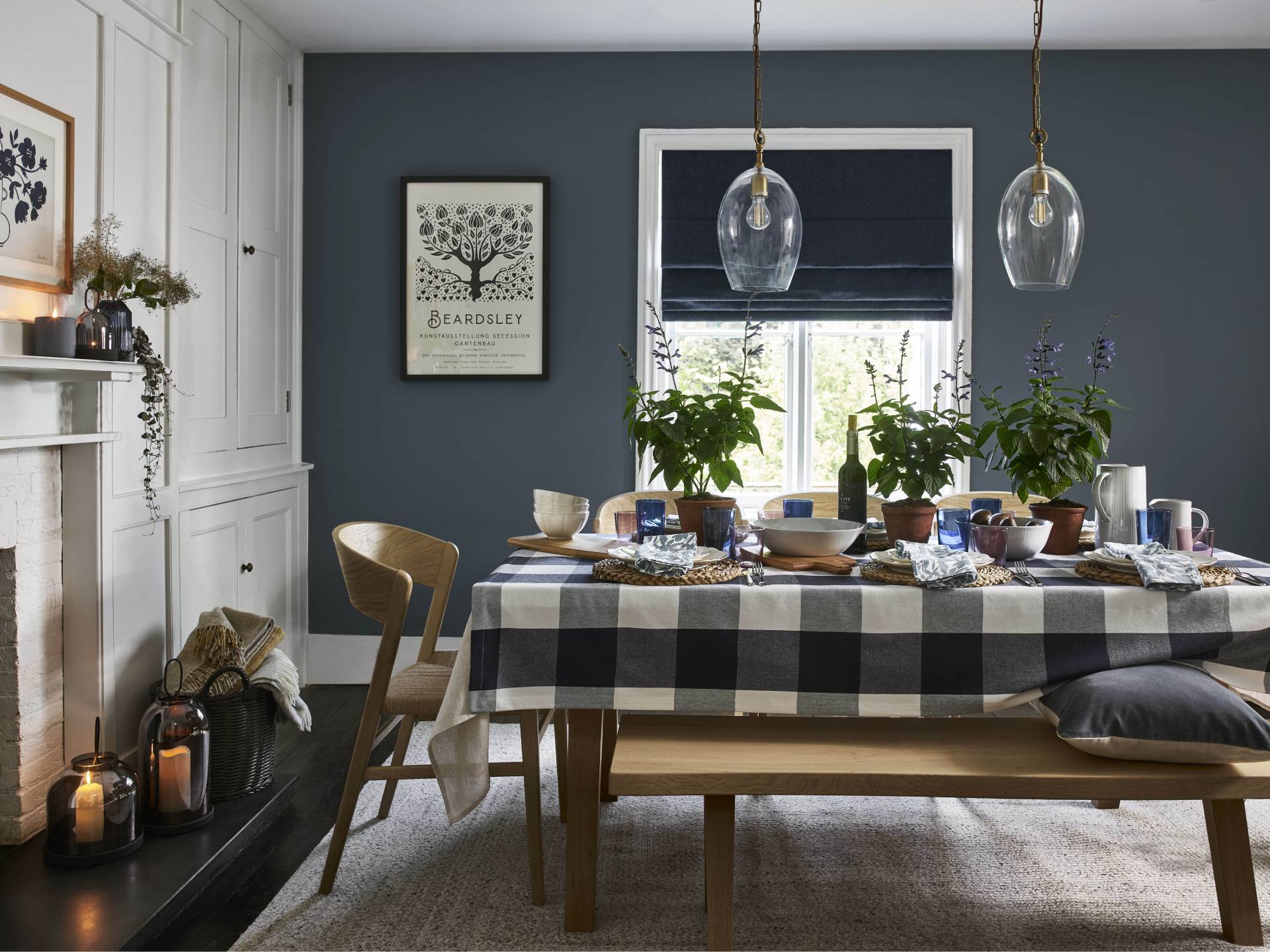
Image credit: John Lewis
9 dining room seating ideas and set-ups
Choosing and arranging dining room seating is a task that falls somewhere between interior design challenges and military operations. You need chairs that are stylish and comfortable enough for a long Sunday lunch sitting, but also practical, so they can be easily manoeuvred around the table and cleaned of spills after the kids have communed for a post-school snack.
Do you go for beautiful upholstery that will impress your guests but could end up stained, or removable tie-on cushions that might not be as pretty, but can be thrown in the wash? Should your chairs have arms for support, or will they be awkward to arrange? And are mismatched chairs a sign of indecisiveness or a testament to your impeccable eclectic taste?
Then there’s the problem of where to seat extra guests. Folding chairs can save the day but could leave your dining room looking more ‘sports hall’ than a ‘fancy restaurant’. Whereas a strategically placed bench can accommodate an influx of visitors without anyone feeling like they drew the short straw.
We’ve spoken to furniture experts, interior designers and restaurateurs to discover their secrets to perfect dining room seating. Take their advice, and you’ll be able to sit back and enjoy good food, good company and chairs that delight every derrière…
1. Let patterned upholstery make a statement
“Upholstery choice plays a key part in the comfort and style of the dining chairs you choose,” advises Amanda Huber, creative director at Dining Chair Co, who suggests this is a good place to start when shopping for dining chairs. “Fabrics such as linen, velvets or cotton are soft and comfy and will bring warmth, cosiness and texture to the dining room. And because they come in a wide range of colours and patterns, you have endless options to create something really beautiful and unique to you.
“On the downside, they can be more challenging to clean,” she adds. “But developments in the textile industry have seen the introduction of various stain-resistant and performance fabrics including velvets, chenilles and linens that are life-proof, combining all the practicalities with style.”
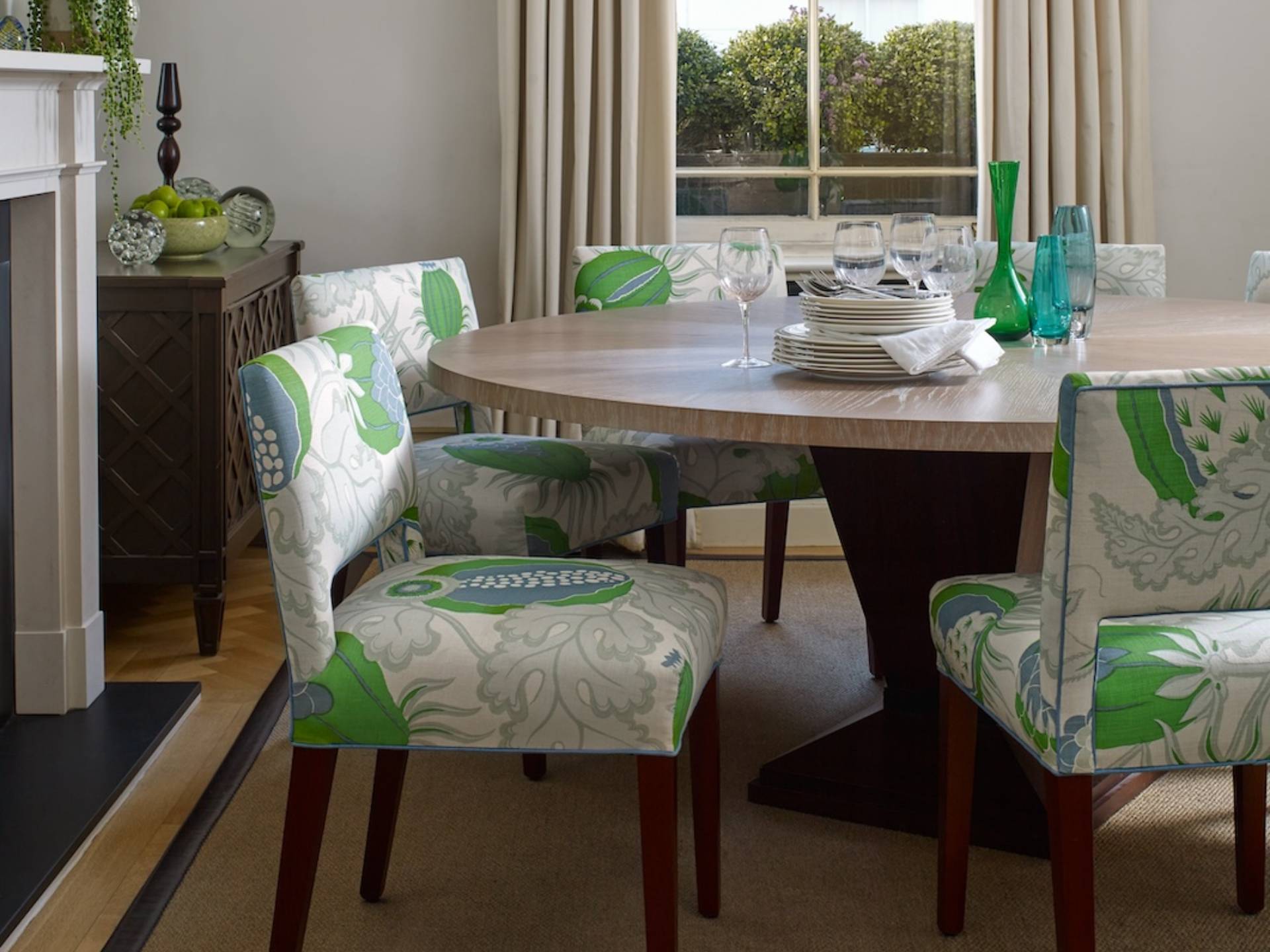
Debbie Leigh, design manager at ILIV, prefers upholstery fabrics like microfibre or treated cotton blends that offer stain resistance and easy cleaning. “Consider colours and patterns that complement your dining room décor while camouflaging minor stains and wear,’ she suggests.
2. Zone a space with banquette seating
If your dining space is limited – perhaps because you are squeezing it into a room with multiple purposes like a kitchen or living room. A table arranged in front of a banquette may be a practical option.
“Banquette seating has become an increasingly popular choice for family kitchens,” says Al Bruce, founder of Olive & Barr. “The compact nature of its design offers a cosy communal feel, ideal for informal dining. Additionally, going bespoke in this way allows for awkward spaces to be utilised, creating dining nooks without taking up precious floor space.”
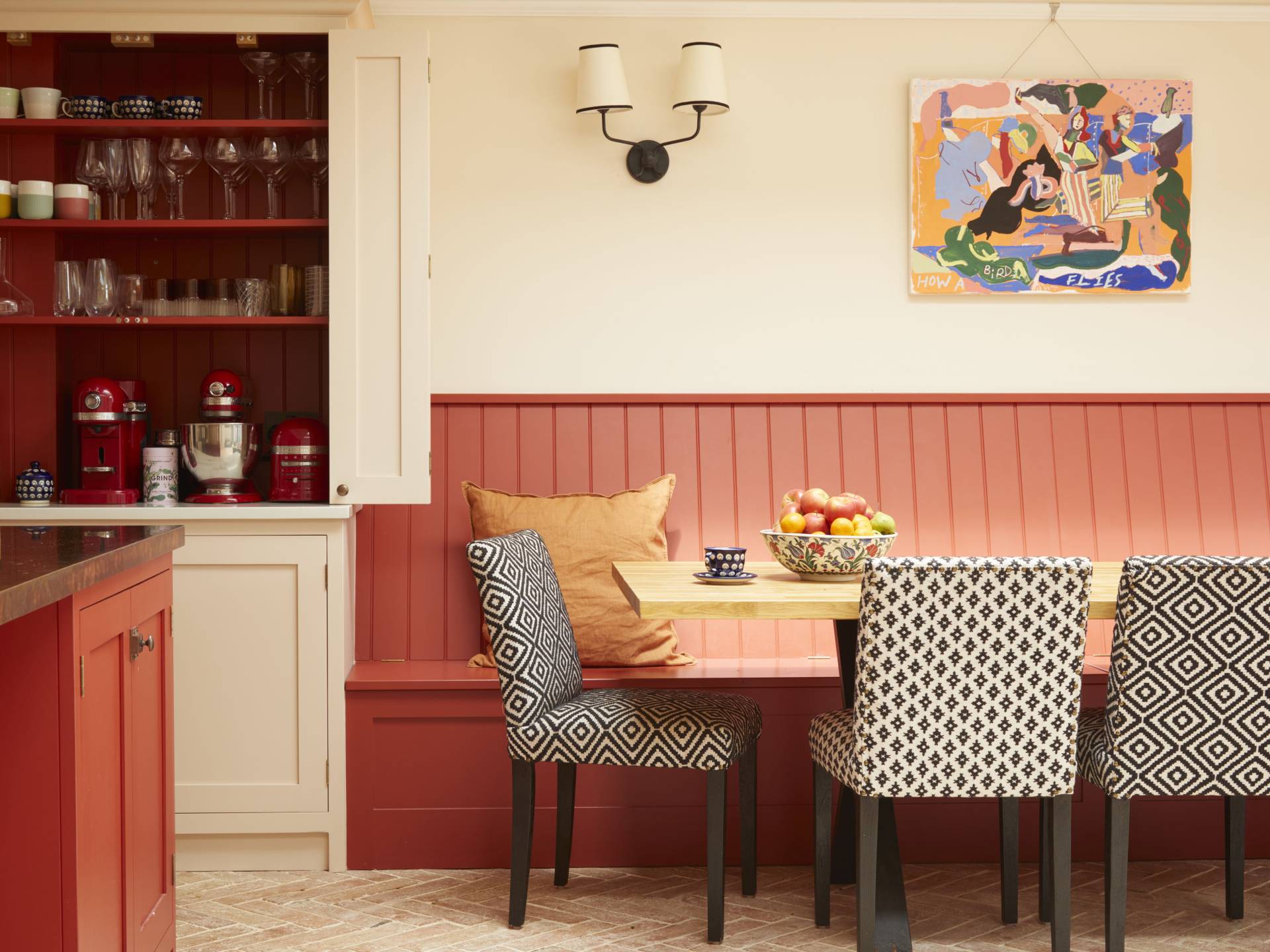
“Before planning banquette seating, evaluate the space you have available – common configurations are L-shaped, U-shaped or a straight bench set against a wall,” says Al. “Your kitchen designer will likely be able to create a design which will be in keeping with the rest of your cabinetry, or you could consider adding character with tongue and groove cladding and contrasting colour. This not only adds texture but also a sense of grandeur, ideal for entertaining.”
“Banquette seating can look fabulous – and is a great opportunity to bring some pattern, texture, and colour into the space with the fabric you choose to upholster it in,” adds Sophie Clemson, director and co-founder of interior Designs The Living House. “Crucially, it can help to zone the dining area in an open-plan space and is a great way to squeeze more people around the table compared to individual chairs. If you choose corner banquette seating, you can see everyone around the table, which makes for better conversation!”
Another advantage of a banquette is its capacity for hidden storage through lift-up seats or pull-out drawers. “A built-in banquette can provide ample storage underneath – ideal for stashing away dining essentials and extra linens,” agrees Claire Garner, director at Claire Garner Interiors.
3. Use benches in a family space
While Grandad might prefer a cushioned, high-backed chair that cradles his spine, you’ll likely find that the kids are perfectly happy on a bench. This means combining one with dining chairs could be a shrewd move when catering for a crowd. “Bench dining seating is a great choice for families, as they provide plenty of seating for everyone, from kids to adults, encouraging a sense of closeness and community,” says Fred Horlock, design director at Neptune.
“If you can, pick a design that fits under your table, such as our Arundel bench (from £729),” he suggests. “This will save space and create a clean, uncluttered look.” This can be especially important if your dining room doubles as a thoroughfare between two other rooms or open-plan spaces.
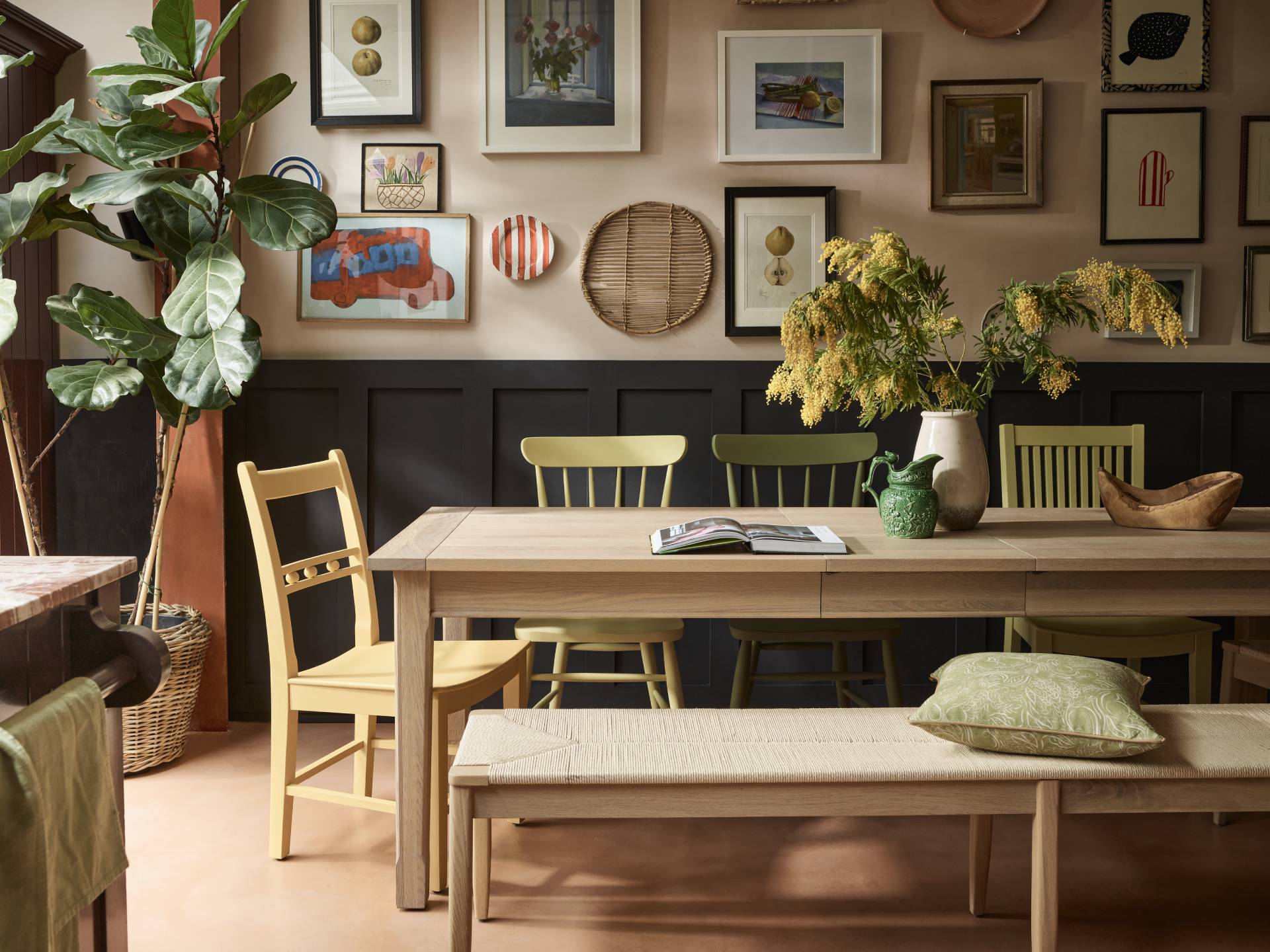
“Another good solution in small spaces is to have an upholstered dining bench along a wall so that the table can be pushed back on a daily basis and pulled out when more people are there, this will allow you to seat more people easily and will instantly feel less formal,’ says Amanda Huber. “We are seeing the trend towards having a combination of dining benches and chairs used together, bringing more flexibility to the dining room.”
4. In a kitchen diner, ditch the island
Look through anyone’s kitchen design wish list and it’s likely you’ll find an island somewhere near the top. But not every kitchen will benefit from one, especially if you plan for it to double as a dining spot. “Within a smaller space, a kitchen island can sometimes create a visual block in the middle of the space that can lack intimacy, leaving the room feeling a little utilitarian,” explains Rachel Usher, founder of Rachel Usher Interior Design Studio.
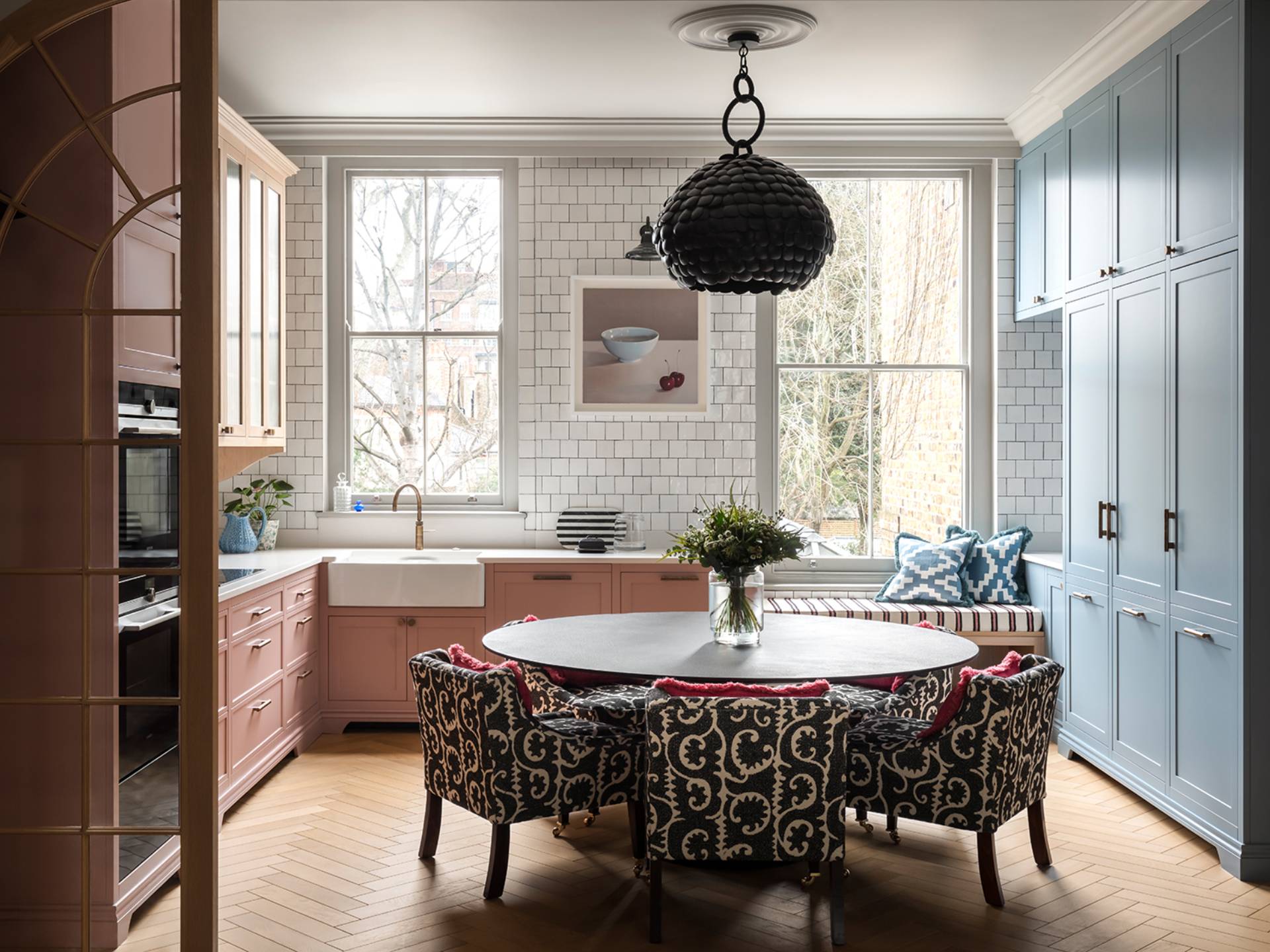
“Understanding our client’s lifestyle and how they liked to cook and entertain guests helped us to craft a space that felt intimate for an evening over dinner,” Rachel continues. “The circular Desalto dining table comfortably accommodates six large dining chairs, chosen specifically for their comfort. Choosing a circular table also lends itself well to a squarer floor plan such as this, encouraging all guests at the table to feel central to the theatre of food and enhancing social connectivity.”
5. Make the most of any views
If you’re lucky enough to have a dining room with a good view, it makes sense to position your seating so that as many people as possible can enjoy it. It could be a stunning landscape, like this vista from the window of Heythrop Park Hotel, a pretty garden, or even an interior feature.
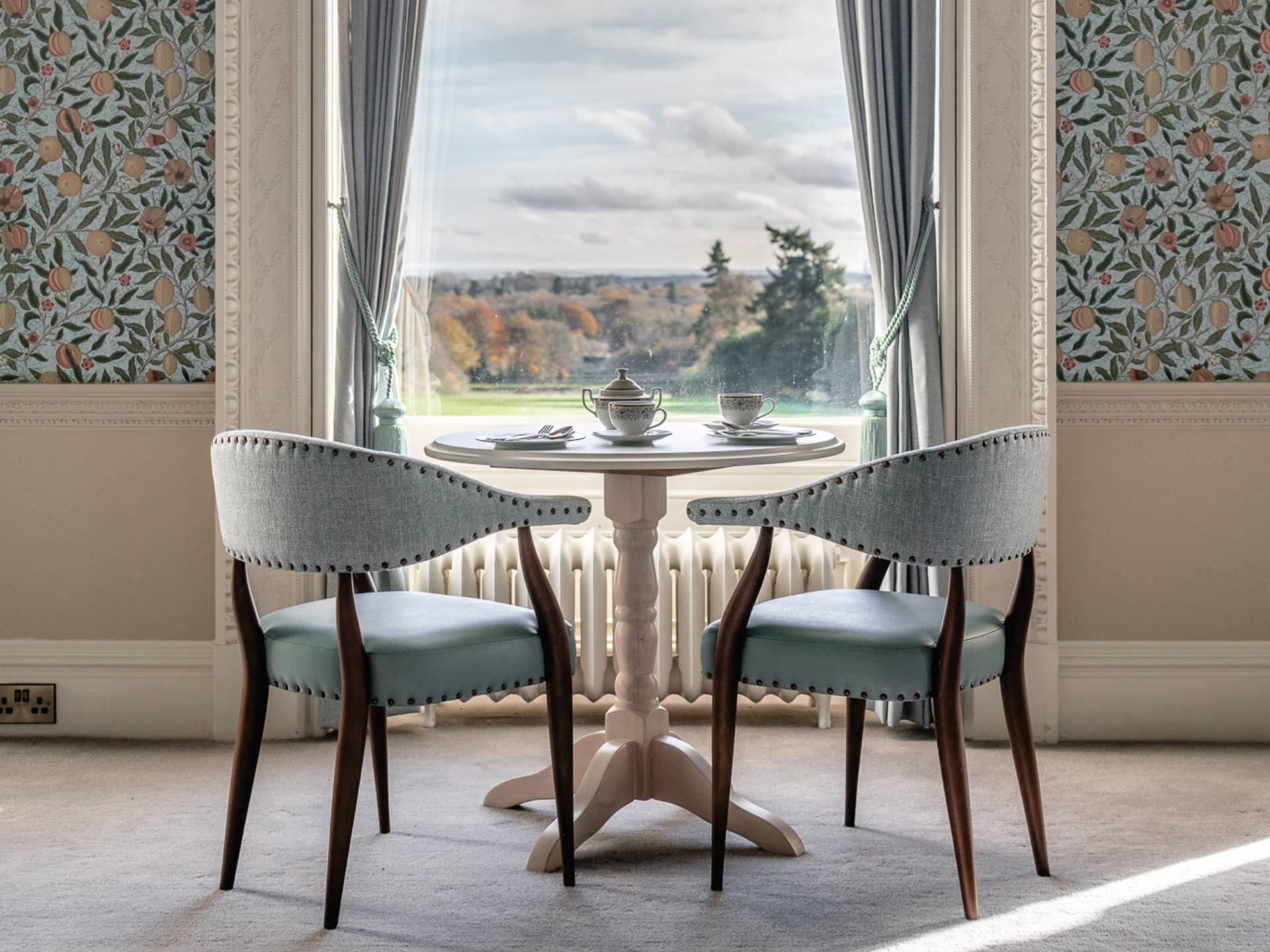
Restaurant designer, Dale Atkinson, founder of Rosendale Design, has worked with many high-profile clients and is currently designing Jason Atherton’s three new restaurants “When I am laying out a dining room I always put myself in my guests’ shoes. What would I want them to see, the great view? Or perhaps a piece of art that I am proud of, or the warm fireplace.”
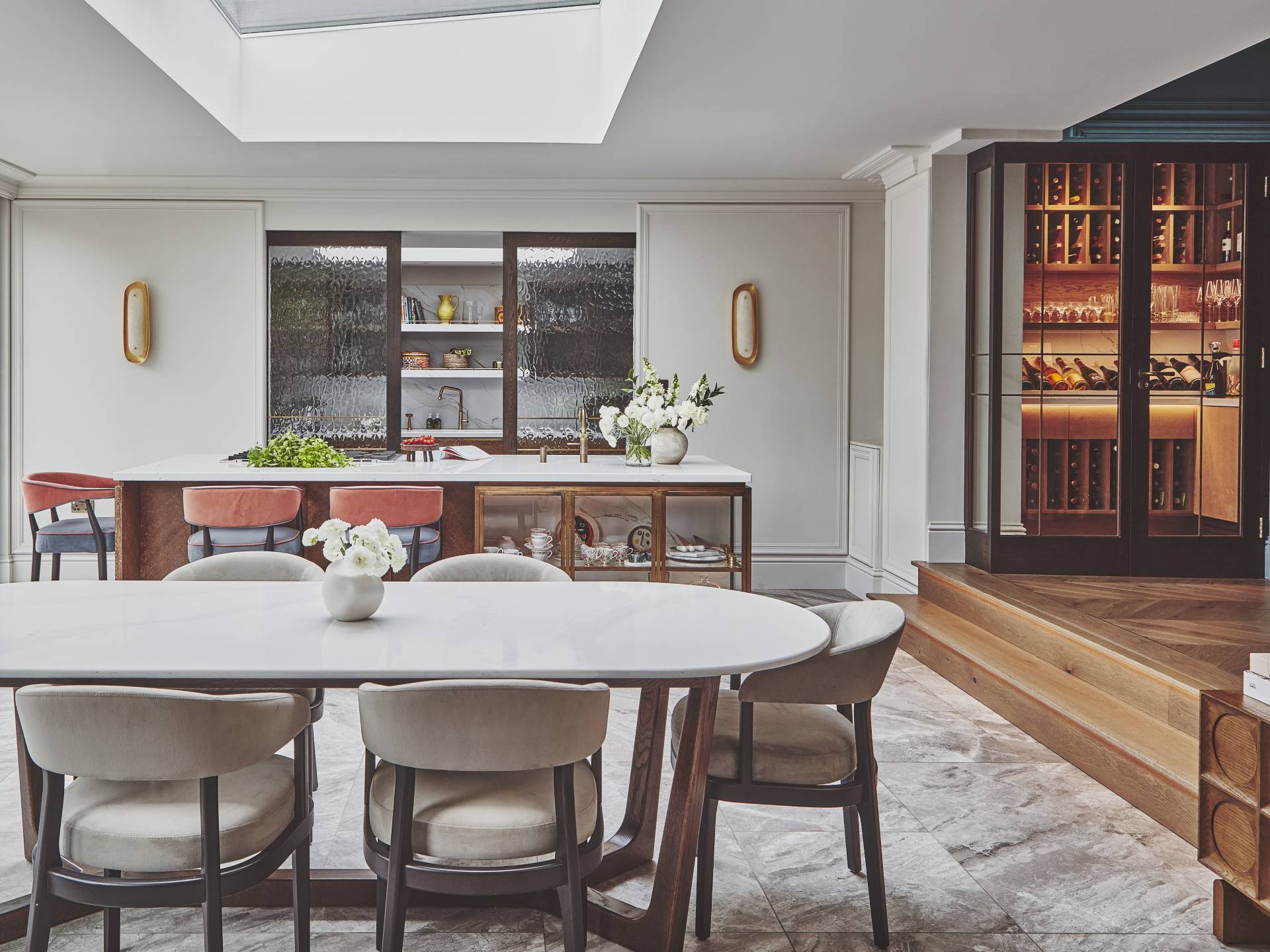
“At a project we just completed we designed the open-plan kitchen and dining room so that all the people at the table had a fantastic view of the expansive garden to one side, which boasted a dual-aspect fireplace. Then to the other side was a feature wine cellar with glazed walks so guests could see the wine collection.”
6. Leave enough space around your table and chairs
“Avoid choosing big, bulky designs and instead choose tables, chairs and benches that are proportionate to the size of the room,” says Amanda Huber. “The general rule is to allow for 1 metre from the table side to the wall or other furniture pieces, such as dressers or sideboards, to allow the chairs to be pulled in and out. This should increase to 1.5 to 2 metres to allow people to walk behind the chairs when pulled out.”
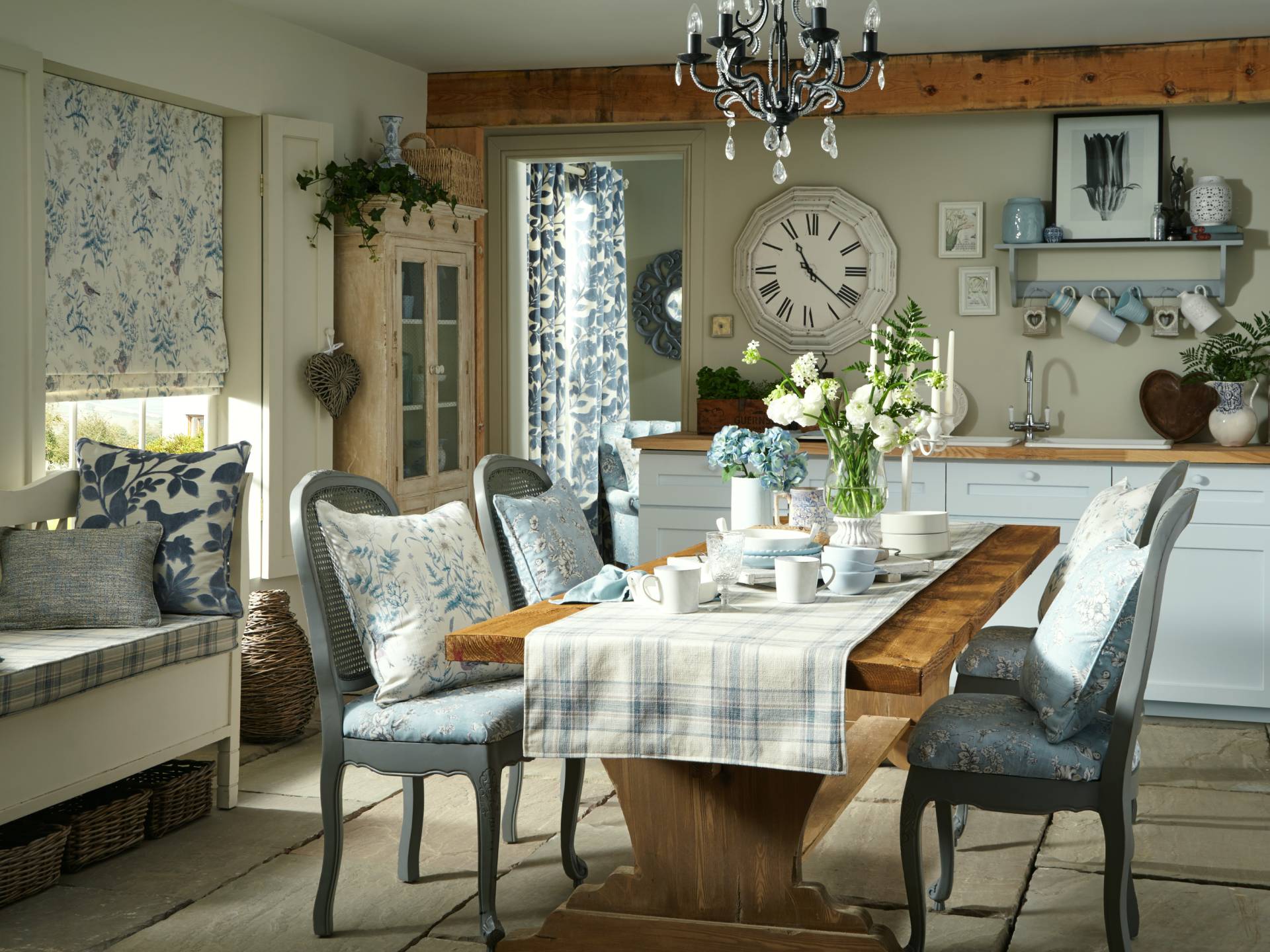
7. Put spare chairs on display
“Depending on the style of your dining chairs, one could look great in the corner of the room paired with a floor lamp, a tall plant or a side table,” says Sophie Clemson. “The chair can then be moved to the main table when needed.”
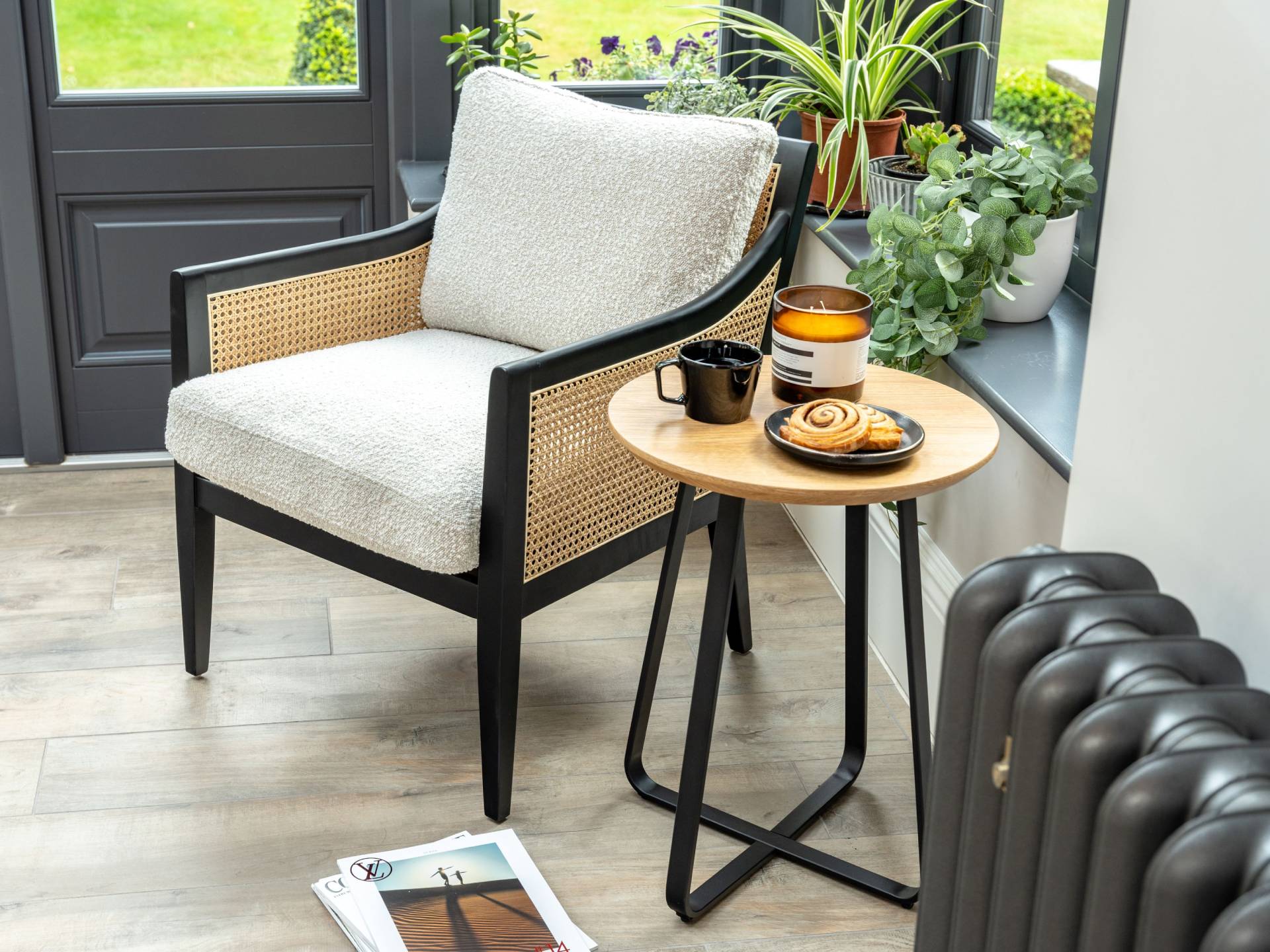
Alternatively, there are some great folding dining chairs like the Peio, £80 from Habitat,’ she adds. ‘It has stylish, rattan design and can simply be folded away in a storage cupboard or garage.”
You can always upholster some of the chairs in different fabrics so that they can sit in other rooms on a day-to-day basis, and be brought round the table when you need to seat more people,’ adds Amanda Huber.
8. Co-ordinate seating in open-plan areas
“Open-plan and multi-purpose, today’s kitchens need to work hard at doing everything,’ says Richard Moore creative director at Martin Moore. “Seating is at the heart of how, where and when people will work, socialise and relax, so most kitchens need a combination of places to perch and places to spend more leisured and relaxed time.”
“This can mean there are two seating types – dining chairs and kitchen stools – in the same space,” says Tansin Blankley, interior designer at hospitality industry specialist ABDA Design, who points out that this can create a muddled design if not given enough thought. “To create a more layered approach, consider using a different set of chairs and stools which are complementary.”
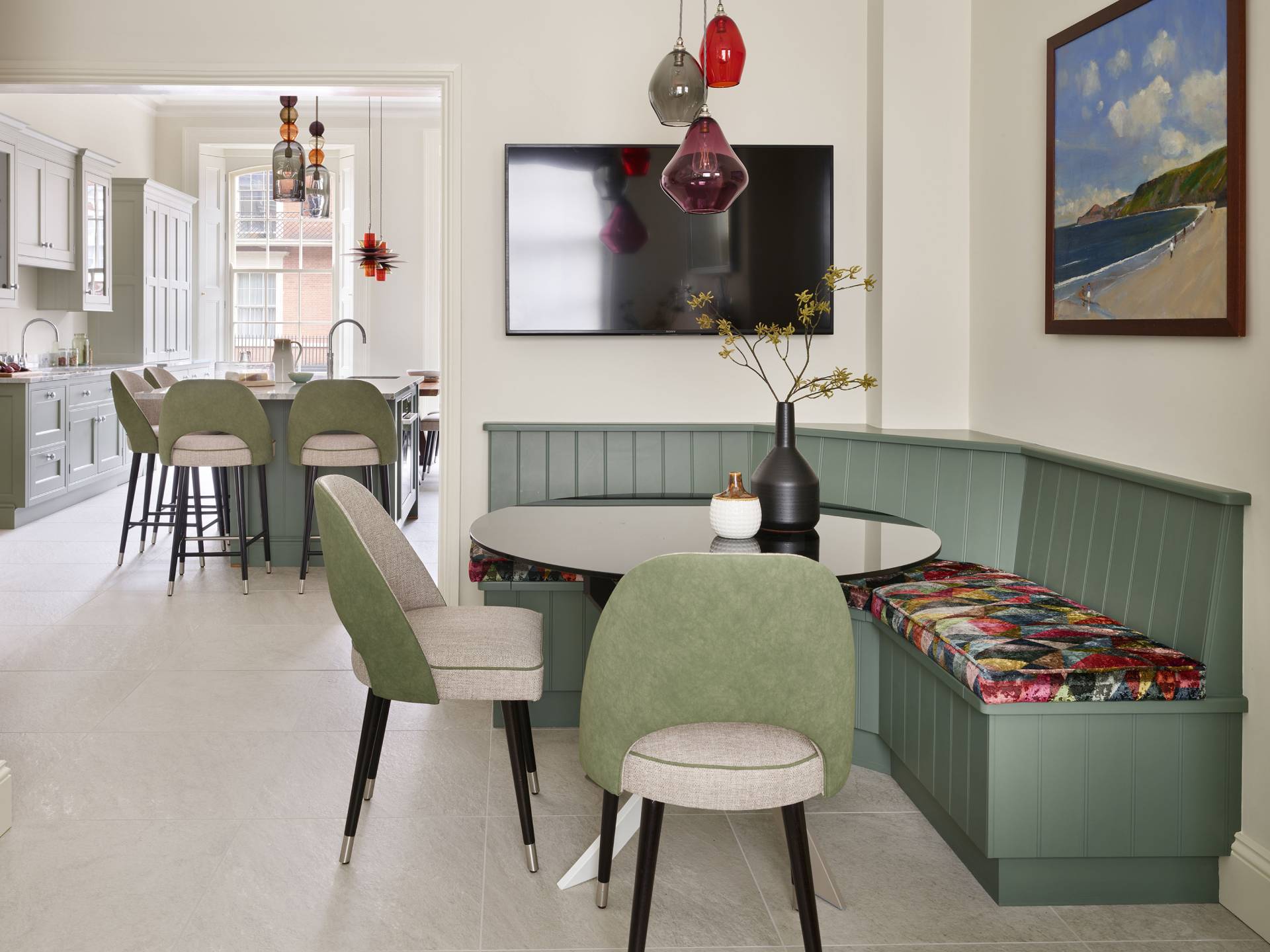
To do this successfully, Tansin suggests:
- Using the same texture on a contrasting shape: for example, woven or hessian detail
- Using the same shape and form, such as a curved back rest or tapered leg but in a
contrasting colour tone - Using different styles of seat but with united colours, fabrics and design details, for example, green-velvet upholstered seat pads with a tie detail
9. Mix and match seating
“Don’t be afraid to mix and match different styles of seating to create an eclectic, personalised look. Combining modern chairs with a vintage table or mixing different chair designs can add character and interest to your dining space,” says Holly Hallam, co-owner of award-winning agency DesignLSM.
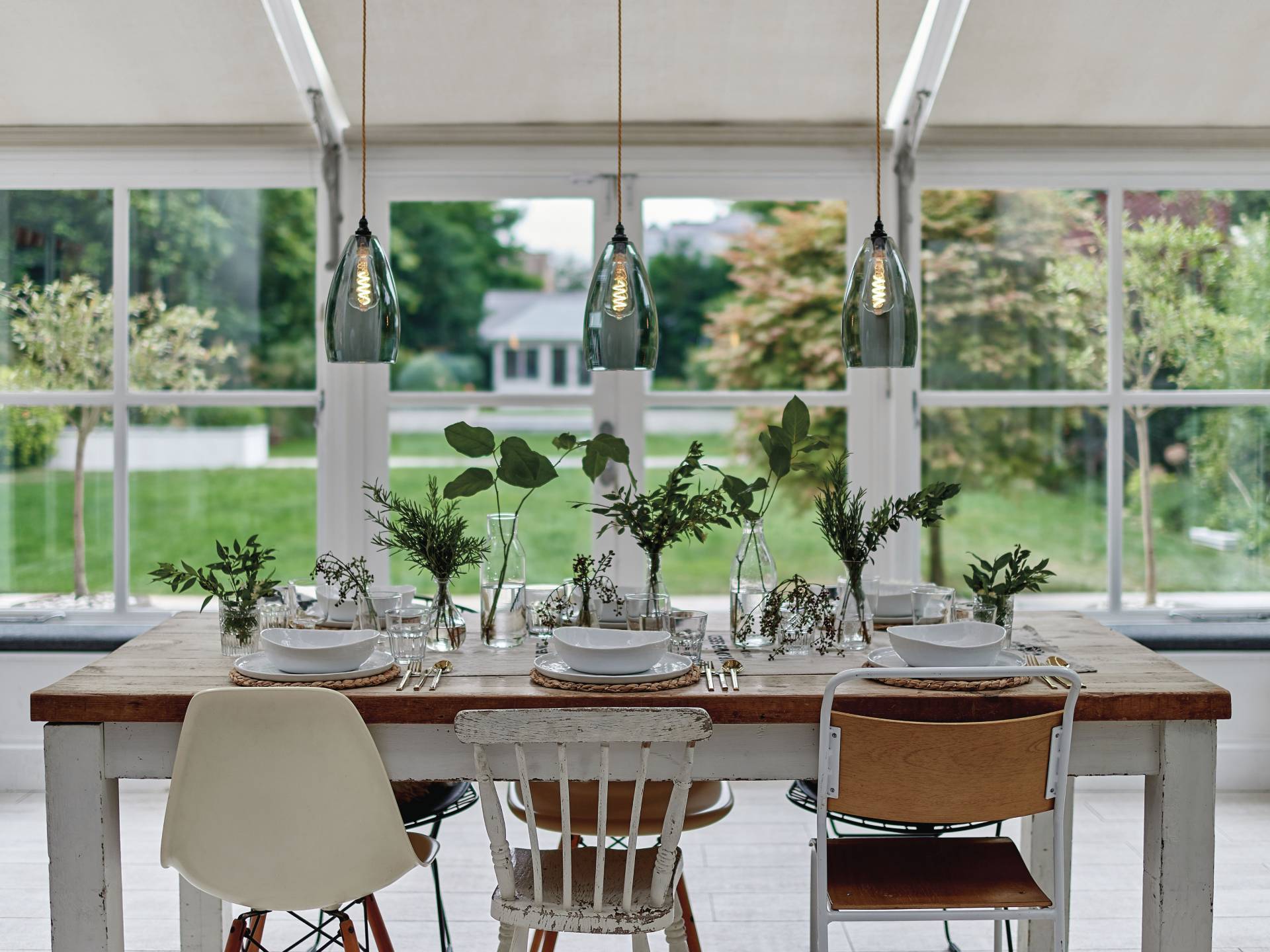
Arms versus no arms: which is best for dining room seating?
“Armchairs offer added support and a more formal, luxurious feel, making them ideal for the heads of the table or larger dining spaces,” says Adam Brown, director, The Painted Furniture Company. “Armless chairs, on the other hand, are more versatile and space-efficient, promoting a casual look while allowing for more seating around the table. Consider a mix of both for a balanced, eclectic arrangement, placing armchairs at the ends and armless chairs along the sides.”
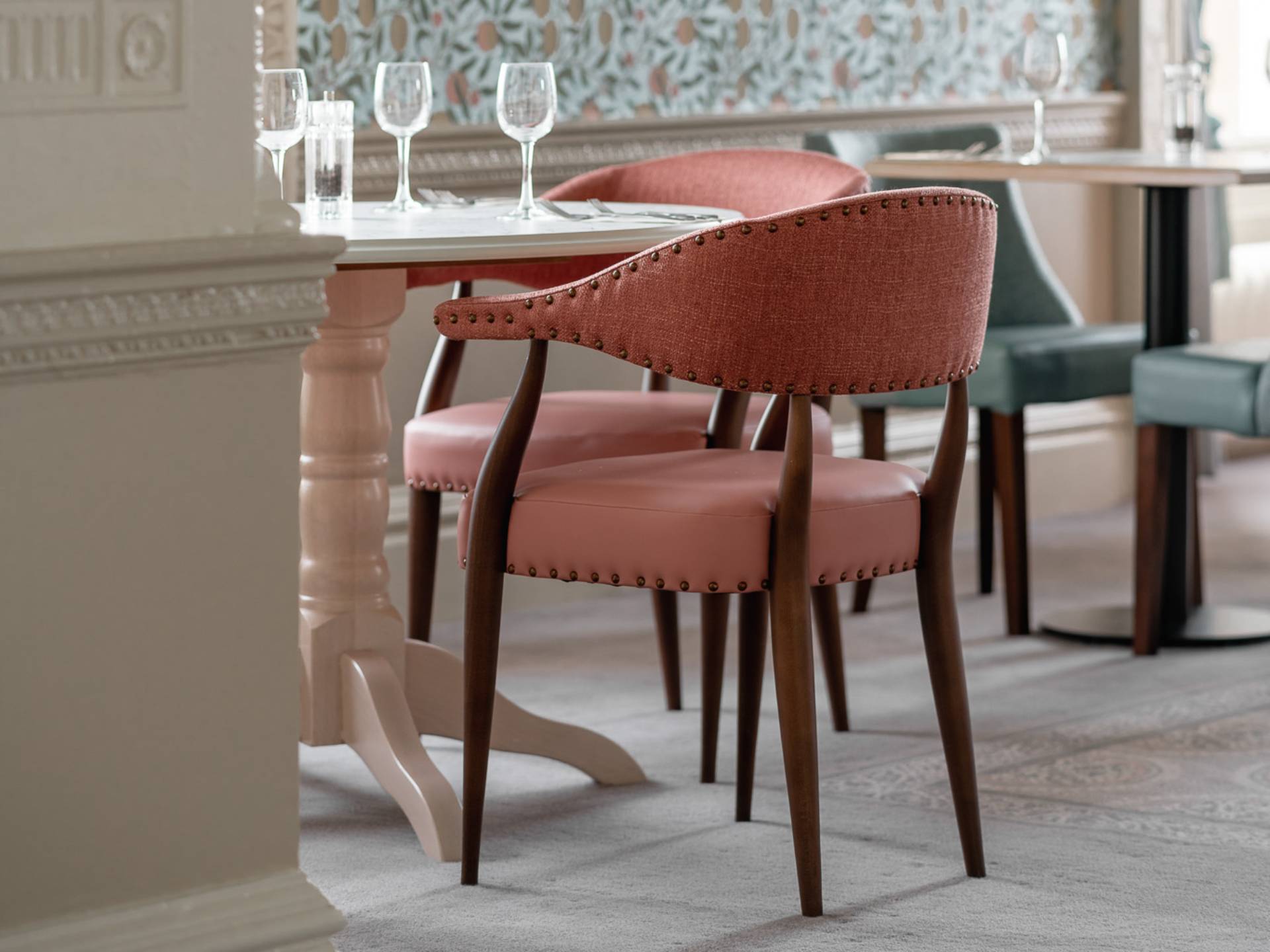
“It really depends on the look you’re going for, and what you want in terms of comfort and practicality,’ says Amanda Huber. “Designs with arms tend to lend themselves to a more refined and formal experience. The arms provide additional comfort and support, making them a go-to for gatherings where guests are likely to linger at the table for extended periods of time.”
“On the contrary, armless chairs can tuck away under the table more easily, which is especially beneficial in compact dining rooms,” adds Amanda. “And they often have a more modern and streamlined look which can complement modern homes better. If you’re looking to maximise capacity, armless chairs take up less space per seat, allowing more chairs to fit comfortably around your table.”
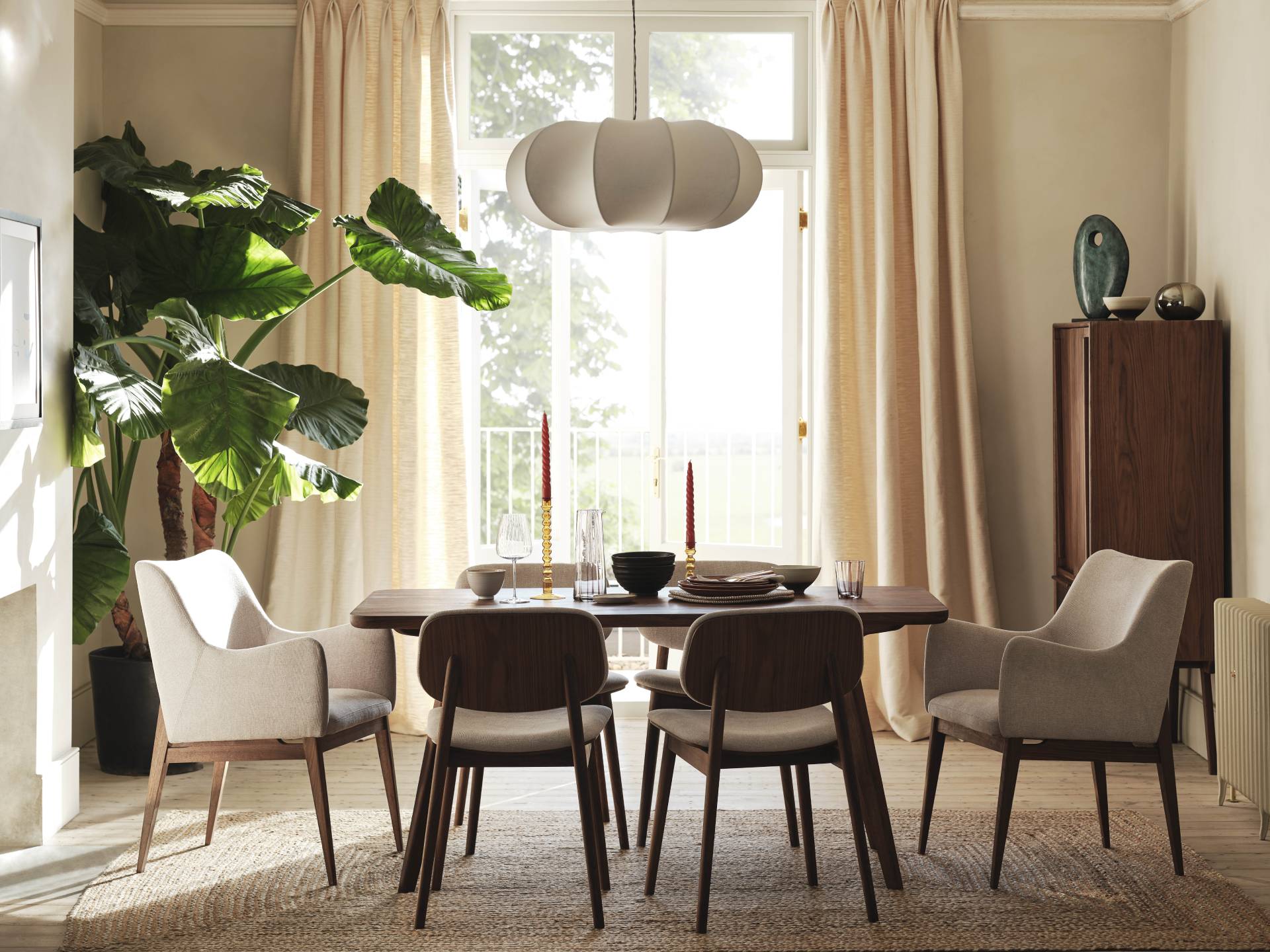
“Dining chairs with arms can create a formal edge to your dining room,” agrees Sophie Clemson. “If you want to elevate your dining room, you could opt for two carver style dining chairs at each end of the table this will create a formal feel. Chairs with arms can sometimes provide more support and comfort as the backs tend to be high and scoop around your back. However, if you’re looking for a lived-in feel to your dining room, then choose dining chairs without arms for a simple and relaxed look.
What’s the best material for dining chairs?
“When selecting materials, consider practicality, tactility and comfort,” says Holly Hallam. “Wood is a classic and durable choice, though it can be hard, so adding cushions or padded seats can enhance comfort. Metal chairs can give a sleeker and more modern look, and whilst they’re often more sturdy and easier to clean, they can be less comfortable without proper cushioning.”
“I recommend choosing a reliable material like solid timber that ensures both durability and elegance,” says Fred Horlock at Neptune. “And I always recommend trying a dining chair before investing – it should be comfortable as well as in keeping with your personal style. Our Kenilworth chair has elegant frame constructed from birch wood to ensure exceptional durability. The oak seat pad and backrest with a slight flex provide robust yet comfortable support meaning you can easily stay seated for a few hours at a time.”





